Residential make up air system
Coming here to vent, but hopefully find some answers.
I am floored by how difficult it has been to find asnwers/solutions from the pros in my area. Major/multiple room renovation and this is literally the only thing that has been a significant challenge as my own GC for the project.
I purchased a 36" monogram 6 burner rangetop. Has roughly 120,000 BTU output. Using calcs I have found (dividing by 100) tells me I need a 1200 CFM of exhaust. Cool. Fantech has that, not a problem.
In comes MUA. The bane of my existence. Fantech has that too, with heat. I can install both in my large attic. Easy. Well not according to an HVAC engineer I spoke with. Despite my request to throw it in the attic, I am constantly being reminded that it has to be conditioned (not just heat, but also cooled) per code. I am semi calling bullsh*t. Maybe this is a commercial thing, but I haven't seen anything saying it need to be cooled. His bid??? $20k. I about defecated myself. He wants to divert the intake into the return to condition the air. I like the idea, and have seen that thrown around a bit in my research, but not 20 freaking thousand dollars. I bought a $3k range and your telling me I have to spend 7x that to have it meet code. How can someone bid a job like this that high? He must be pulling in $1k per hour. I picked the wrong field. Oh, and please dont tell me thats normal, because its not, so we can end that discussion before it starts.
Anyway. I have spoke with a couple HVAC contractors as well (not engineers) and they all seem kind of shocked that I want to do this. I asked one of them how often do they put MUA in residential homes, and the answer was basically never. This guy said he was on the board that helps make the code (or something like that) in my state. There are roughly/probably 10 brands that sell these higher output ranges, marketed to residential kitchens and its impossible to find someone to install MUA. Shame on the distributors for not having an easy system or referall source for MUA, because mine sure didnt. Is this just going completely unnoticed? I mean, IT IS actually a health hazard. Dont tell me to open a window either. That doesnt meet code, but I will do that anyways.
I even bought a heat pump water heater to help avoid backdrafting. I have a vented gas fireplace, and a gas furnace.
Whats a guy to do? I have 2 HVAC contractors coming out in the next week. Maybe I can convince them to just install the damn inline fan and MUA in the attic without charging an arm and a leg. I know that you can place a restriction or limiter on some of these MUA systems where it can only run at so many cfm to stay below code. Thats been suggested by the guy on "the board", but that still doesnt meet code in my situation because I still have a range that has output of 120,000 BTU.
Maybe I will just buy an induction.
Does someone have experience with this, or installed the fantech systems, or similar, in the way I am describing without issues? We get probably 2 months where it will be close to if not freezing temps. I dont need the heat all that much. The cooling would be nice but not 20k nice. Plus I would likely just use 3 burners max most of the time and run the fan on the lowest setting. So why 6 burners? I dont know, it looks cool. Its big and its gas. I just want it. I also know that there will be added costs, so dont need a lecture on that, but lets be reasonable. I'll pay 6-8k for the entire system. That includes roughly less than 4k in unit costs (fan + MUA w heater). Would it really take $2-4 k in materials and labor to run the ducting??? (fan goes straight up out the roof, and MUA is about a 10 ft duct run--- all in the attic with an exposed ceiling at the moment).
Help me make this make sense. For anyone looking for a new career, apparently there is a massive gap in the MUA residential business, you'd make a killing and be super busy.
Comments (19)
T T
4 months agoOthers may balk at this, but I don't even think you need a powered fan with heating for the makeup air if you're not cooking a ton of stuff at once. A passive system like this works good enough, even when it's 30 degrees outside. Unless you're cooking and running the fan at high speeds for a very long time, it won't cause noticeable discomfort in your home.
https://www.broan-nutone.com/en-us/accessory/md10tu
I don't know where in the code it requires makeup air to be heated. Most places aren't enforcing that even if it is in the code.
Scott thanked T TCharles Ross Homes
4 months agoHi, Scott,
Providing make-up air as you know, is to prevent the consequences of depressurizing a home when high-capacity exhaust devices are in use such as back drafting of combustion devices. The 2018 International Residential Code, which forms the core of most statewide building codes, requires installation of a make-up air system if the range hood exhaust capacity exceeds 400 cfm (see 2018 IRC section M1503). You have two system options: a passive or a mechanical (powered) make-up air system. The powered Fantech system falls in the later category. It's a great system. I am not aware of any code requirement to condition the air in any way-- including filtering it but your local code may dictate that. In our coastal Virginia climate, we find that make-up air can be introduced in reasonable proximity of a range hood and not require conditioning. By contrast, if you introduce the make-up air in the air handling system, the system will need to heat or air condition the flow rate of make-up air in addition to the flow rate of air circulating in your home. That does allow the option to filter the air, which is true of the Fantech system, too.
As TT notes in the post above, a passive system can be installed. Broan/Nutone has a good guide to make-up air systems available at https://www.broan-nutone.com/getmedia/a31efbb7-8b9c-4931-ab22-2c905fe7c220/Broan-make-up-air-damper-application-guide.pdf they also have an online calculator that will enable you to size the required damper based on the required flow rate, your location, and the specific design of the duct work https://bnt-makeupairspecifier-tools-prod-2023.azurewebsites.net/MUATemplate.aspx If there's any doubt about compliance with local codes, check with your local code official. I also recommend your contractor test the system by measuring make-up air flow with the range hood operating at full speed.
Scott thanked Charles Ross HomesRelated Professionals
Moorpark Solar Energy Systems · New Lenox Solar Energy Systems · Burlingame Home Automation & Home Media · Mount Lebanon Home Automation & Home Media · Pittsburgh Home Automation & Home Media · San Pablo Home Automation & Home Media · Seattle Home Automation & Home Media · Winthrop Fireplaces · Spokane Kitchen & Bathroom Remodelers · Gainesville Kitchen & Bathroom Designers · North Versailles Kitchen & Bathroom Designers · Saint Charles Kitchen & Bathroom Designers · Bloomingdale Kitchen & Bathroom Remodelers · Prospect Heights Cabinets & Cabinetry · Santa Paula Tile and Stone Contractorskaseki
4 months agoThere is a huge amount of MUA "stuff" on this forum that the OP may wish to unearth and review. There is an even larger body of work relating the the hood venting system requirements, also useful to review.
Whether gas or induction, the use of residential hoods with little reservoir volume below the baffles makes the hood intake air velocity (and hence CFM) dependent on the cooking plume upward velocity rather than commercial rules of thumb related to BTUs or hood boundary length. Velocity may not be materially less for induction cooking than for gas when stir frying or searing. I recommend 90 CFM/sq.ft. (90 ft/min) for hood intake air flow, and the hood should sufficiently overlap the cooking zone to provide full capture. The MUA flow rate has to equal this, or perhaps in some cases also make up for other kitchen ventilation, bathroom ventilation, and/or fireplace ventilation.
Significant savings in MUA complexity can be gained by ensuring that all combustion appliances be sealed from the kitchen and be given their own MUA.
W.r.t. a question above, I believe that at least one of the northern, mid-west states requires heated MUA; this may have been Wisconsin. This is the first that I have heard of requiring cooled MUA, and because residential air conditioning is not usually imposed by code, imposing it on MUA seems unlikely. My understanding is that using a hot air heating system to distribute the MUA is to be avoided.
Here are some references.
First dozen or so pages of https://www.tagengineering.ca/wp-content/uploads/2015/02/KVSApplDesign_catalog.pdf
These FAQs
https://www.houzz.com/discussions/2328297/range-hood-faq-personal-notes-updated-10-31-2007#n=20
https://www.houzz.com/discussions/5161173/hood-faq#n=101
https://www.houzz.com/discussions/6099827/exhaust-hood-faq-ii#n=113
https://www.houzz.com/discussions/6040827/range-hood-noise-project
https://bamasotan.us/range-exhaust-hood-faq/
This example of the many threads here on this topic -- this one on the HVAC forum that might be missed searching the appliance forum.
https://www.houzz.com/discussions/5888450/seeking-muas-advice#28657635
Scott thanked kasekimike_home
4 months agoIf the concern about the compliance to code, then here are questions to consider:
I purchased a 36" monogram 6 burner rangetop. Has roughly 120,000 BTU output. Using calcs I have found (dividing by 100) tells me I need a 1200 CFM of exhaust.
What is the code requirement for the minimum amount of exhaust air required for a 120,000 BTU cooking appliance?
The 2018 International Residential Code, which forms the core of most statewide building codes, requires installation of a make-up air system if the range hood exhaust capacity exceeds 400 cfm
What is the largest gas output cooking appliance which the code will allow with a 400 CFM exhaust and no make up air?
Charles Ross Homes
4 months ago"What is the code requirement for the minimum amount of exhaust air required for a 120,000 BTU cooking appliance?" Good question. The 2018 IRC doesn't mandate installation of vent hoods over ranges and cooktops, although best practice and common sense suggest otherwise. That said, if a vent hood is installed, code requirements apply including provision for make-up air if the exhaust capability exceeds 400 cfm.
Scott
Original Author4 months agoT T, definitely a thought and more cost effective. I dont claim to know the calculations but my understanding is that 1200 cfm of intake would beed a MASSIVE hole in the house/roof. 10” is required for the active MUA system from fantech. I believe more is needed for a passive unit. Not sure if thats entirely accurate.
Scott
Original Author4 months agoKaseki, thanks for the info. I appreciate the links. In general, im fairly knowledgable of the code in my area, and we dont need conditioned (heated/cooled) air for make up. The engineer was pushing that agenda and im not falling for it. Its discouraging when the pro you go to for advice isnt on the same planet as far as code and whats required.
Mostly, I was hoping there was an active user that has recently run into this problem and had it done. Outside of sizing the hood appropriately, i feel like alot of it is air in and air out and i feel like the people ive reached out to in my area are making it much more complicated (and VERY expensive).T T
4 months agoI live in an area where they don't seem to be enforcing even the MUA requirement for over 400 cfm hoods, so take this for what it's worth. All our gas combustion appliances are sealed so there is no real concern of backdrafting. We wanted MUA to support performance of a 1200 cfm hood, mostly to keep cooking smells and fumes/particulate out of the house. With a 10" passive Broan MUA damper, the system seems to perform well enough for the way we cook. We no longer have food smells circulating throughout the house, and our air quality sensor doesn't spike when frying stuff. So for our purposes, our goal was accomplished with a simple passive system. As Charles stated, we have the MUA ducted to a location near, but not too close to the vent hood (about 10 ft away or so). Also, I should not that we have not yet found a need to run our vent hood at max speed (so we're not really exhausting anywhere near 1200 cfm usually). If your desire is to meet code, I believe the passivr system will meet code even if you only use a 10-in duct. If you have combustion appliances that are not sealed and this is a safety issue, then I would definitely go with the Fantech or other active system.
Charles Ross Homes
4 months agoI ran the Broan calculator for sizing a passive system. Assuming worst-case conditions (a full 1,200 cfm make up air rate and zero leakage in the home) it indicates a 10" damper and up to 25 linear feet of 10" diameter ductwork with no more than 2 elbows will work.
mike_home
4 months agoI would likely just use 3 burners max most of the time and run the fan on the lowest setting.
The Monogram 36 inch professional rangetop has a maximum output of 112K BTUs. If you only use the three biggest burners (23K, 23K, and 18K) the output is 64K BTUs.
The 2018 IRC doesn't mandate installation of vent hoods over ranges and cooktops,
Given you are unlikely to use all the burners at maximum heat and there the code does not require any vent hood, then why go through the expense and trouble of installing a 1200 CFM range hood and the required make up air? Do you think the smoke detector will be going off constantly if you installed a range hood that moved 400 CFM (actual and not rated) of air and avoided the make up air problem?
Scott
Original Author4 months agoMike_home… because its already been purchased. Its possible I could return it, but it does go the rest of our appliance package (monogram everything except a sub zero fridge). So its mostly because of aesthetic but also because there may be times where i need more burners (christmas, thanksgiving etc). Its not so much a question of “why not just get a smaller range?”…. I am okay with MUA system, but its frustrating how difficult it is to find someone to install it without price gouging.
Dewayne, definitely plan on calling the inspectors office.
Charles Ross Homes, great, thanks for doing that calc. Honestly might be a decent solution if the opening is the same size.kaseki
4 months agoSomeone missed some points above, not to mention all that is in the links. One pan on full power might require the full flow of the hood system because we can't selectively block different parts of the hood aperture and we can't get the expanding plume to go into a particular unblocked portion of the baffles. Note that I referred to 90 CFM per square foot of hood entry aperture. I did not reference how many burners/hobs were in use, or BTU rating of the cooktop. Read the Greenheck guide (first link) and mentally correct for not having high reservoir volume below the baffles as commercial hoods typically have.
Failure to have MUA, even if not required by code or by back-drafting protection, means even less flow rate from the hood than with MUA. No air leaves the kitchen that isn't resupplied. And with MUA, assume you only get 2/3 of the zero static pressure rated flow rate pending an analysis. E.g., 1200 rated CFM --> 800 actual CFM. This is also the amount the MUA needs to replace with its 1200 rated CFM blower. Further, the pressure losses in the MUA path may be less or more than the kitchen hood path, (mainly baffle limited), so some analysis can be helpful. Often the two blowers will not have matched fan curves, so that is also a consideration.
As for back-drafting, please see the below information another forum user once provided, and I recently reformatted.
Mechanical-Draft Appliances
Heating systems with fan-powered exhaust systems can withstand higher negative pressures than natural-draft appliances. Some types of fan-powered systems are much better than others, however. In order of effectiveness, the choices are:
* Sealed-combustion. Also called “direct vent,” these appliances draw all combustion and dilution air from outside. These can typically tolerate negative pressures in the range from 25 to 50 Pa.
* Power-vented. These draw their makeup air from indoors and are also called fan-assisted, forced-draft, or mechanical-draft. These can typically tolerate up to 15 to 20 Pa of negative pressure.
* Induced-draft. These have a small fan added for energy performance, not to overcome house depressurization. These can typically tolerate 5 to 15 Pa of negative pressure.
By comparison, an atmospherically vented furnace can back-draft with as little as 5 Pa of negative pressure, and a gas water heater will have spillage at 2 or 3 Pa. Fireplaces can start having problems at about 3 Pa. Canadian codes limit negative pressures in homes with atmospherically vented equipment to 5 Pa. U.S. codes do not currently address the issue (in a plainly spelled out "prescriptive" number).
1 pascal = 0.00402 inches, water column
1 atmosphere = 407 inches, w.c.
Scott thanked kasekimike_home
4 months agoScott,
It is a nice looking cook top and I wasn't suggesting you return it. I just was trying to come up with an easier and less costly solution.
I find it interesting the residential code this not require exhaust air for cooking appliances. This means the code writers do not think not having one is a safety issue. I am also skeptical about the exhaust air calculation. The equation CFM = BTU output/100 seems to be a rule a thumb and not based on science. Perhaps it is designed for the range hood salesman to do the calculation without a calculator.
I will pose this question for those who install or own a hood exhaust system. If the range hood is rated for 1200 CFM and is connected to a 10 inch diameter duct,25 feet long, with two turns, what will be the approximate actual air flow and about noise will it generate?
Scott
Original Author4 months agoHi kaseki, didnt forget your post. I havent read through all the links yet but working on it. I appreciate your knowledge and references and I understand. There is alot more than just pound for pound (or cfm for cfm in this matter) and know that there are alot of variables. I have the mental capacity to understand that i need make up air. I dont have the mental capacity for the load calcs and duct sizing and how that limits air flow. I want to hire someone to figure that out for me. I guess thats where ive hit a wall.
Scott
Original Author4 months agoMike_home… no sweat, i didnt think you were suggesting that so all good. I am skeptical of the calculation to but it gives me a general idea. I am hoping to leave that one up to the pros. Honestly, id do the install myself if i knew what i was doing.
“I will pose this question for those who install or own a hood exhaust system. If the range hood is rated for 1200 CFM and is connected to a 10 inch diameter duct,25 feet long, with two turns, what will be the approximate actual air flow and about noise will it generate”
another question to add to this is how much does noise matter if the fan was inline in the attic, and same with MUA.kaseki
4 months agoTo calculate this, you need
- the fan curve of the actual blower to be used (possibly available)
- the duct lengths and curves (given)
- the hood (baffle and transition losses) pressure loss vs. flow rate (almost never available). Baffles will dominate the hood system pressure loss if MUA is adequate.
- how good the MUA is at keeping a given house pressure stable (assume perfect)
You need to calculate the brown curve (from sum of duct curve and baffle curve) and obtain the black fan curve

Or use 2/3 as I suggested.Noise is minimized by using a remote blower (roof, side, or in-line) and an in-between silencer (e.g., Fantech LD-10). Even quieter is an oversized blower operated at partial speed. Mounting techniques and dampening materials can further reduce noise in some cases.
Charles Ross Homes
4 months ago"I find it interesting the residential code this not require exhaust air for cooking appliances. This means the code writers do not think not having one is a safety issue." Does the lack of a posted speed limit on a road suggest that it's safe to drive whatever speed you want? The absence of a code requirement mandating installation of range vent hoods doesn't mean the writers of the code believe that failing to exhaust cooking effluent, combustion gases and moisture poses no safety hazards. It only means it's not yet a code requirement. The code development cycle is painfully long and typically lags knowledge of best practices by a number of years.
We started testing our range hood exhaust systems last year anticipating that our local mechanical inspector might want to see test results. Albeit based on a small data set, our experience suggests that the 2/3 of nameplate capacity rule of thumb is a reasonable approximation.
mike_home
4 months agolast modified: 4 months agoI am not an residential code expert. From my own experience dealing with the code officials in my NJ township, I find the requirements will some times go beyond in my opinion what is needed to prevent a safety hazard.
We are seeing more questions about installing a commercial stove in a residential home. Yet the writers of the residential code don't seem to think having a gas appliance capable of burning 120,000 BTUs next to a wood cabinet in an air tight house is going to be a problem. I suppose you are right. Homeowners need to use some common sense when designing a kitchen with these type of appliances.
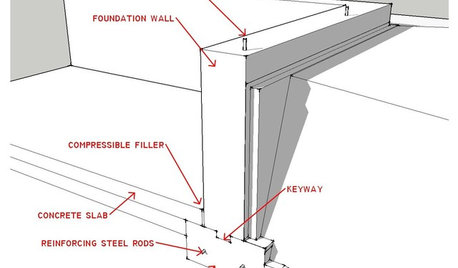
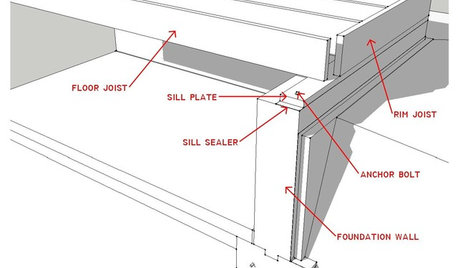
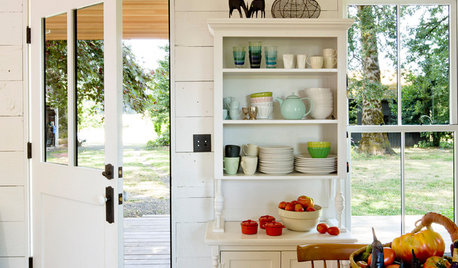
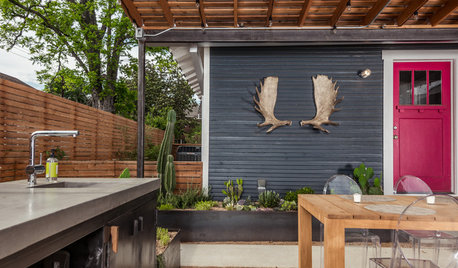
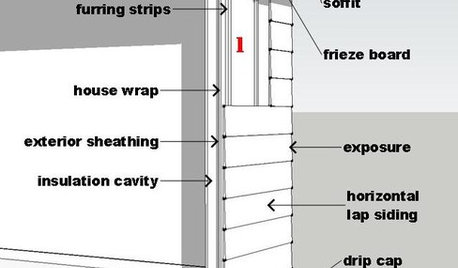
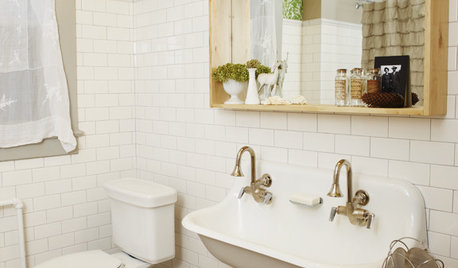
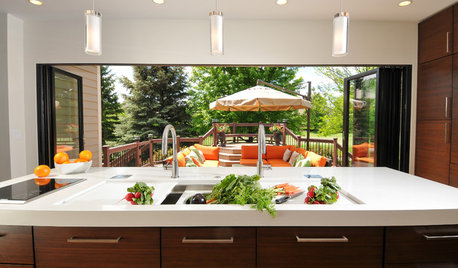


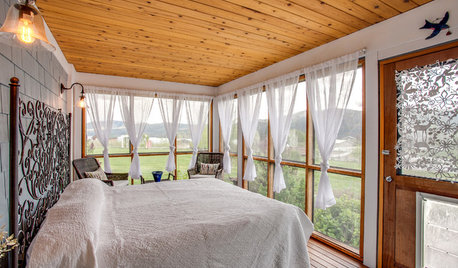








DeWayne